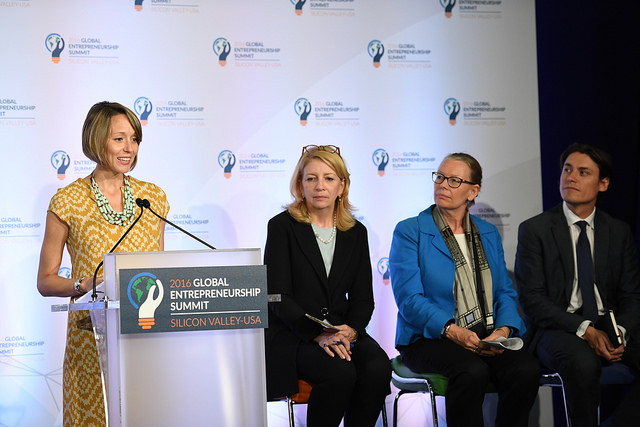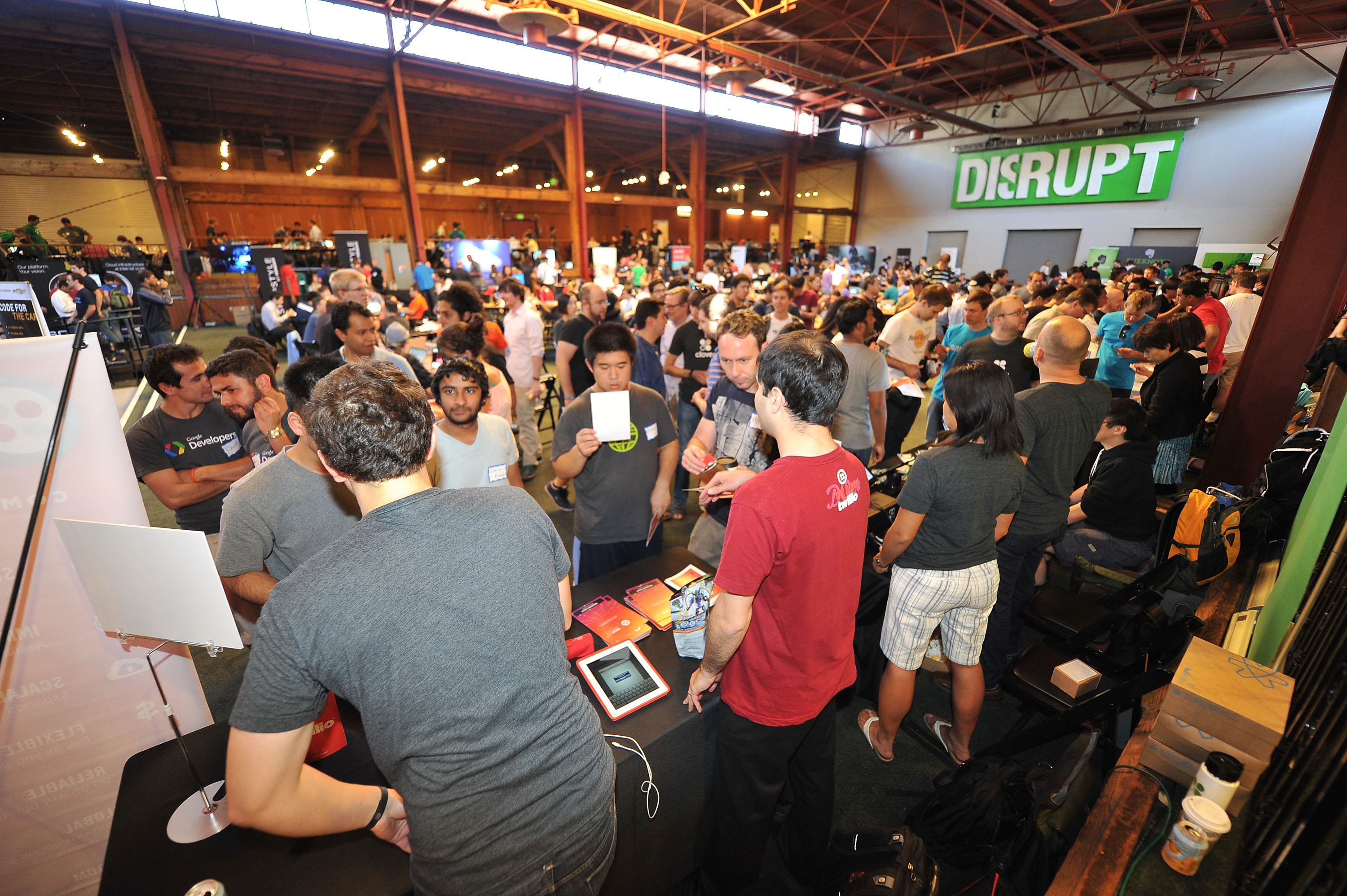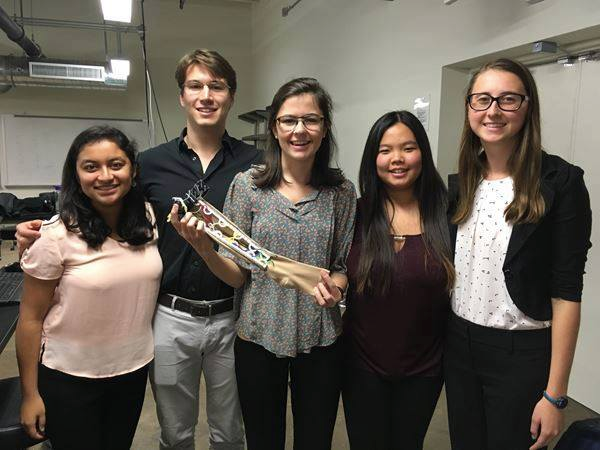When you think of an emerging entrepreneurial ecosystem, you probably think of Austin, Texas or Boulder, Colorado, not a moderately sized city deep in the heart of the Midwest. But Cincinnati’s entrepreneurship ecosystem is positioning itself as a good place to start a high-growth, high-technology startup firm.

The Fortunate 500 companies that call Cincinnati home, such as Kroger, P&G and Macy’s, have been investing in their local ecosystem through a nonprofit organization. The resulting increase in resources and capital in Cincinnati’s entrepreneurship scene has led industry commentators, including TechInsurance and Entrepreneur.com to enthusiastically expound the city’s positive trajectory. In this blog post, I explore the driving forces behind Cincinnati’s transformation and ask whether it is real.
History of Entrepreneurship
Local and state governments have historically helped maintain the Cincinnati ecosystem. Individual grant programs provided the Cincinnati Children’s Hospital Medical Center, University of Cincinnati and the Cincinnati Regional Chamber with funding for high-tech projects. However, until recently, the Fortune 500 companies have been largely absent from Cincinnati’s entrepreneurship ecosystem, and there was no depth to the ecosystem’s support and service organizations. For example, less than a decade ago, there was not a single startup accelerator anywhere in the region.
Accelerators in Cincinnati
The past few years have seen an emergence of a spate of entrepreneurial resources available in and around Cincinnati. Accelerators – 12 to 16 week entrepreneurship boot-camp programs for startups that typically end with a pitch day – now span the tristate area of Ohio, Kentucky and Indiana.
Cincinnati now boasts The Brandery, UpTech, OCEAN, First Batch, Founder Institute, a minority business accelerator housed in the Cincinnati chamber of commerce, and two university affiliated accelerators. There are also several incubators in the local area.
The Brandery
The Brandery, located in Cincinnati and founded in 2010, was inspired by successful accelerators such as Austin’s Capital Factory and Boulder’s TechStars. The Brandery offers a three-month program for seed-stage companies that use Cincinnati’s existing strengths: branding, marketing and design. Companies receive $50,000 in seed funding, office space, branding identity, legal support and more in return for 6% equity stake in the startup.
The Brandery has a portfolio of twenty-nine startups. Notably, the Brandery accelerated FlightCar, “a marketplace that allows owners flying out of an airport to rent out their cars to arriving travelers” that was acquired by Mercedes Benz and Skip, “a mobile checkout solution that allows you to scan items as you go through the store and skip the checkout line.” The Brandery has been ranked a top-ten U.S. accelerator.
UpTech and Ocean Accelerator
Launched in 2012, UpTech is a Greater Cincinnati tech accelerator program for data-driven startups. Located across the river from Cincinnati in Covington, Kentucky, UpTech was established as an effort by Northern Kentucky University College of Informatics and the Greater Cincinnati community. Up to ten startups per cohort participate in a six-month accelerator program and receive up to $50,000. UpTech differs from traditional accelerators in that it draws its hundreds of support staff from community volunteers and interns from Northern Kentucky University. Successful UpTech startups include online walking-tourism planning platform, Touritz, and software and data management company, Liquid.
The third and newest accelerator in Cincinnati is three-year-old, faith-based OCEAN Accelerator. Ocean runs a five-month program that provides mentorship, monetary support in the form of a $50,000 note, branding and legal advice. OCEAN claims to be the the only faith-based accelerator in the nation, and its curriculum features weekly bible studies. Alumni of Ocean include Casamatic, a real estate technology company that increases buyer engagement, and Cerkl, a startup that provides personalized email campaigns.
University Resources
The University of Cincinnati and Xavier University both have academic accelerator programs. The University of Cincinnati’s Technology Accelerator for Commercialization provides full-time faculty and staff with the opportunity to develop intellectual property at the University of Cincinnati. In order to be eligible for the TAC program, the technology must be developed at the University of Cincinnati and have a focus on commercialization. Start-up companies are not eligible for the TAC program.
Xavier University offers a business program aimed to boost the Greater Cincinnati economy. Called X-LAB (short for Xavier Launch A Business), the seven-year old competition provides want-to-be entrepreneurs – particularly including students – opportunities to launch a business. The Williams College of Business supports the winners by providing the business expertise of its professors, executive mentors and MBA students.
Seed-Stage Funding
Cincinnati has had stable seed-stage investors for some time. These include CincyTech and Queen City Angels, as well as some early stage venture capitalists and some nonprofits that provide grants to startups. In recent years, CincyTech and Queen City Angels appear to have had some successes and grown considerably, which bodes well for the future of the ecosystem.
CincyTech
 CincyTech, a public-private partnership focused on seed stage investments, was the first effort by the local government to jump-start entrepreneurship. Established in 2001, CincyTech’s mission has been to strengthen the regional economy through the creation and expansion of technology companies in Southwest Ohio. CincyTech is now investing out of its fourth and largest fund, a $30.75 million seed-stage fund, which is bigger than its first three funds combined.
CincyTech, a public-private partnership focused on seed stage investments, was the first effort by the local government to jump-start entrepreneurship. Established in 2001, CincyTech’s mission has been to strengthen the regional economy through the creation and expansion of technology companies in Southwest Ohio. CincyTech is now investing out of its fourth and largest fund, a $30.75 million seed-stage fund, which is bigger than its first three funds combined.
CincyTech garnered considerable national attention after providing Lisnr, a company that has invented an ultrasonic technology for transmitting data through sound, with Stage A capital. Lisnr came to fruition aboard the 2012 StartupBus, a competition where participants launch a company in 72 hours on a bus headed to Austin for the South by Southwest Festival. Since Lisnr’s establishment, they have received $10 million in Series B funding from Intel Capital and garnered accolades from CNBC’s Disruptor 50 list, Cannes Lions International Festival for Creativity and Fast Company’s Innovation by Design Awards.
Queen’s City Angels
Likewise, Queen City Angels is the region’s longest running angel group and is currently investing out of its largest fund of $10 million. Queen City Angels provided the initial stage funding for Assurex Health. Now ten years old, Assurex grew out of research at Cincinnati Children’s Hospital Medical Center and the Mayo Clinic. Its singular product is the GeneSight Test, which analyzes twelve genes that influence mental health and psychoactive drugs that treat a spectrum of mental health disorders. Myriad Genetics purchased Assurex Health in April 2016 for $225 million with another $185 million to come when performance stipulations are met.
Coordinating the Ecosystem
Two organizations provide the glue for Cincinnati’s entrepreneurship scene. StartupCincy is a grassroots organizations that first registered its domain name in 2010. Cintrifuse is an example of a successful municipal government intervention in an entrepreneurship ecosystem.
StartupCincy
StartupCincy describes itself as “the driving force behind [Cincinnati’s] new economy…a rallying cry.” In addition to maintaining a long list of upcoming network, education, accelerator and developer events in the city, Startup Cincy connects venture capitalists and angel investors to startups. StartupCincy is credited by the Cincinnati Business Courier as “one of the most influential groups leading the renaissance of Cincinnati’s startup community.”
Cintrifuse
However, the most important element of Cincinnati’s ecosystem is probably Cintrifuse. Established in 2011 with the goal of creating a sustainable technology driven economy for the Cincinnati metropolitan area, Centrifuse primary manages a fund of funds. This fund of fund has created a network of venture capital funds, including Allos Ventures, Mercury Fund and Sigma Prime Ventures, that invest in Cincinnati startups.
For big companies, like Kroger, USBank, the Greater Cincinnati Foundation and Duke Energy, investment in Centrifuse isn’t just about financial returns. Corporate investors get access to new companies and new ideas, while the startups receive mentorship and connections that help them access potential partners and customers.
Cintrifuse also provides co-working space in Over-the-Rhine, a neighborhood of Cincinnati, and entrepreneur-focused educational programs. More than four hundred companies have gone through Cintrifuse’s programs, and both CincyTech and the Brandery are located in Over-the-Rhine just feet away, providing unique collaboration opportunities.
Cincinnati’s Venture Capital Woes

Despite all of its great resources, Cincinnati is still not producing enough successful startups to be considered a mature and effective ecosystem. Although there is no consensus among experts, ecosystems that close around thirty to thirty-five deals a year are markedly more stable. Cincinnati falls far below this. While the number of first rounds has been increasing, it appears that the city’s ecosystem may be leveling out at an average of just five first rounds per year.

The largest barrier to Cincinnati’s emergence as an entrepreneurial ecosystem is probably the quality of its deal flow. Despite the recent increase in startup activity, Cincinnati’s venture capital investment peaked in 2002 at $343 million. The recent maximum was $235 million in 2014, with 2016 reverting to pre-2010 levels. Since the turn of the millennium, the venture capital investment has averaged just $139 million per year. Mature ecosystems, like Austin or Denver, are much bigger.
Untapped Potential
Cincinnati’s entrepreneurship ecosystem is small but does genuinely seem to be growing in an exciting way. From 2000 to 2009, Cincinnati saw an average of around two new venture capital deals each year. From 2010, when the Brandery opened its doors, to the present, the number of Cincinnati based startups receiving venture capital for the first time has more than doubled to almost five each year.
There have been many factors at play: more venture capital, more seed stage investment, more mentorship and engagement with established firms, the arrival of accelerators, a co-working space, and specialist training and professionalization programs, and, just possibly, that the Over-the-Rhine neighborhood has achieved a critical mass of startups in close proximity. These factors appear to be working together to reinforce each other and grow the region’s startup ecosystem and the local economy. Cincinnati is surely a startup city to watch!








 Within five years, 76.6% of released prisoners were rearrested.
Within five years, 76.6% of released prisoners were rearrested.

 uasive speaking abilities.
uasive speaking abilities. engineering students enrolled in ENGI 120. She says that “The entrepreneurship at Rice is one of the best in the nation because we have such creative students here, the Elevator Pitch Competition is excellent practice to learn to present not only something you’re working on but also yourself.”
engineering students enrolled in ENGI 120. She says that “The entrepreneurship at Rice is one of the best in the nation because we have such creative students here, the Elevator Pitch Competition is excellent practice to learn to present not only something you’re working on but also yourself.”

